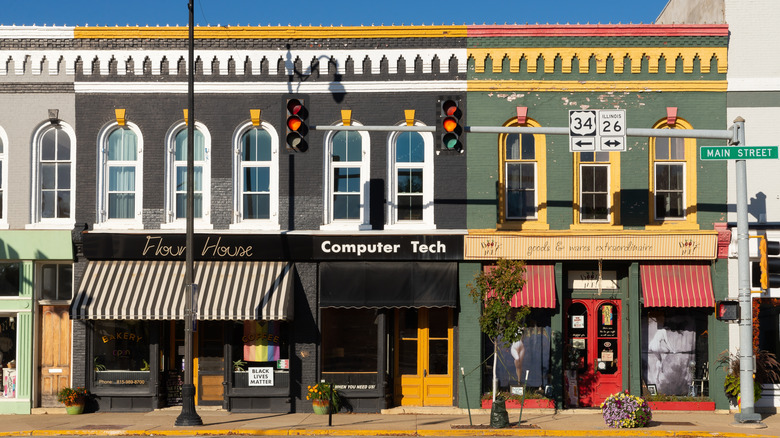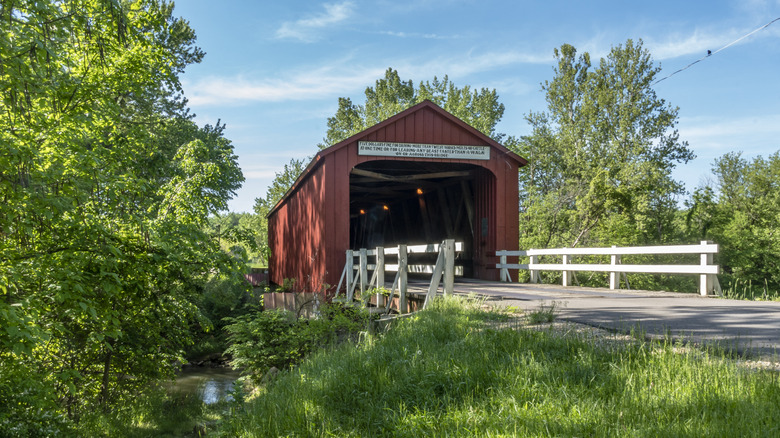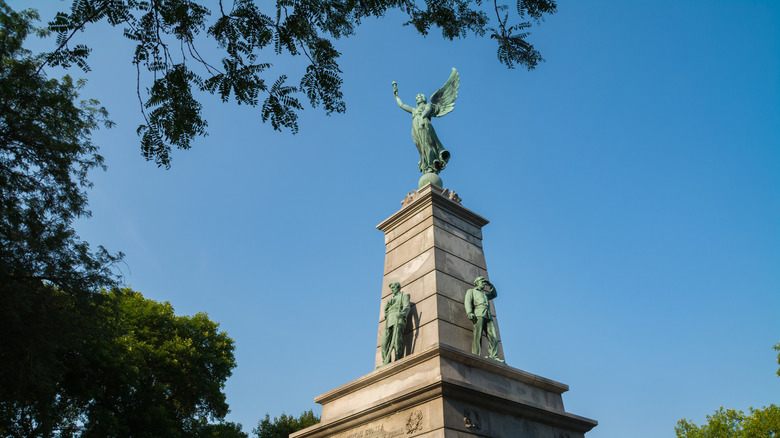Tucked into the rolling farmland of north-central Illinois, Princeton may seem like just another small Midwestern city. After all, the population was approximately 7,800 as of 2023, and its name is overshadowed by more famous Princetons such as Princeton, New Jersey (home of the eponymous Ivy League university). Yet if you stop into Princeton, Illinois, to explore, you’ll find it’s a community rich in history, culture, and quiet charm. From its origin as Indigenous land and its time as an antebellum-era hub of abolition to its modern-day tranquil parks, picturesque Main Street, and covered bridges, Princeton is a perfect blend of past and present.
Princeton was once the crossroads for a number of Indigenous Illinois tribes: The Sauk, Potawatomi, Fox, Kickapoo tribes all inhabited the area. It then became an important stop on the Underground Railroad as enslaved refugees escaped the South en route to Canada. Today, history is alive and well through Princeton’s architectural preservation, historic home tours, an annual Civil War reenactment, the museums and research library at the Bureau County History Center, and the Princeton Public Library, which also has education exhibits and a cafe. Shops and restaurants abound on the robust Main Street, where live music can often be heard in summer. Princeton also boasts more than 200 acres of park area, featuring plenty of green spaces and recreation centers, and hosts a number of festivals and events, like Homestead Festival, a massive, multi-day affair each September that includes contests, races, food, live music, a medallion scavenger hunt, and more.
Situated in Bureau County, Princeton is about 117 miles southwest of Chicago, and about 55 miles north of Peoria, one of America’s best cities to live in. State Route 26 passes right through the city, just off I-80, one of the state’s primary east-west arteries.
Princeton is steeped in historic lore
In the 1800s, Princeton became a key stop on the Underground Railroad. Although Illinois was officially a “free state,” slavery and indentured servitude persisted, and the Fugitive Slave Act made it dangerous for former slaves to stay in Illinois and risk getting sent back. After abolitionist and newspaper editor Elijah Lovejoy was famously murdered by a pro-slavery mob in 1837, Elijah’s brother, Owen Lovejoy — a lawyer, minister, and Illinois congressman — vowed to carry on his abolitionist legacy. In 1838, Owen Lovejoy built a house in Princeton and it became a haven for refugees. A friend of Abraham Lincoln, Lovejoy became a vocal opponent of slavery, traveling 70 miles north to Freeport, Illinois, a historic spot nicknamed “Pretzel City,” to attend the second Lincoln-Douglas senatorial debate, where Lovejoy spoke out against the Fugitive Slave Act. Today, the original Owen Lovejoy House welcomes visitors for guided tours. Princeton laid tracks for a physical railroad in the 1850s, and the city began developing into an economic hub. Freight and Amtrak passenger trains utilize the tracks to this day, and the historic station still stands.
The red covered bridge is a Princeton icon and one of only five covered bridges left in Illinois. Built in 1863 during the Civil War, the 149-foot bridge crosses Big Bureau Creek, about 1.5 miles north of Princeton on Route 26, and is listed on the National Register of Historic Places. It’s popular with photographers and pedestrians, though it’s been closed to vehicles since 2023, after a semi-trailer truck exceeding the height clearance attempted to pass. Repairs are expected to take years. Though not as historic nor red, there’s also the Captain Swift Covered Bridge, another covered bridge just a 6-mile drive away. Visitors recommend venturing down to the creek for photos, a picnic, or to fish.




